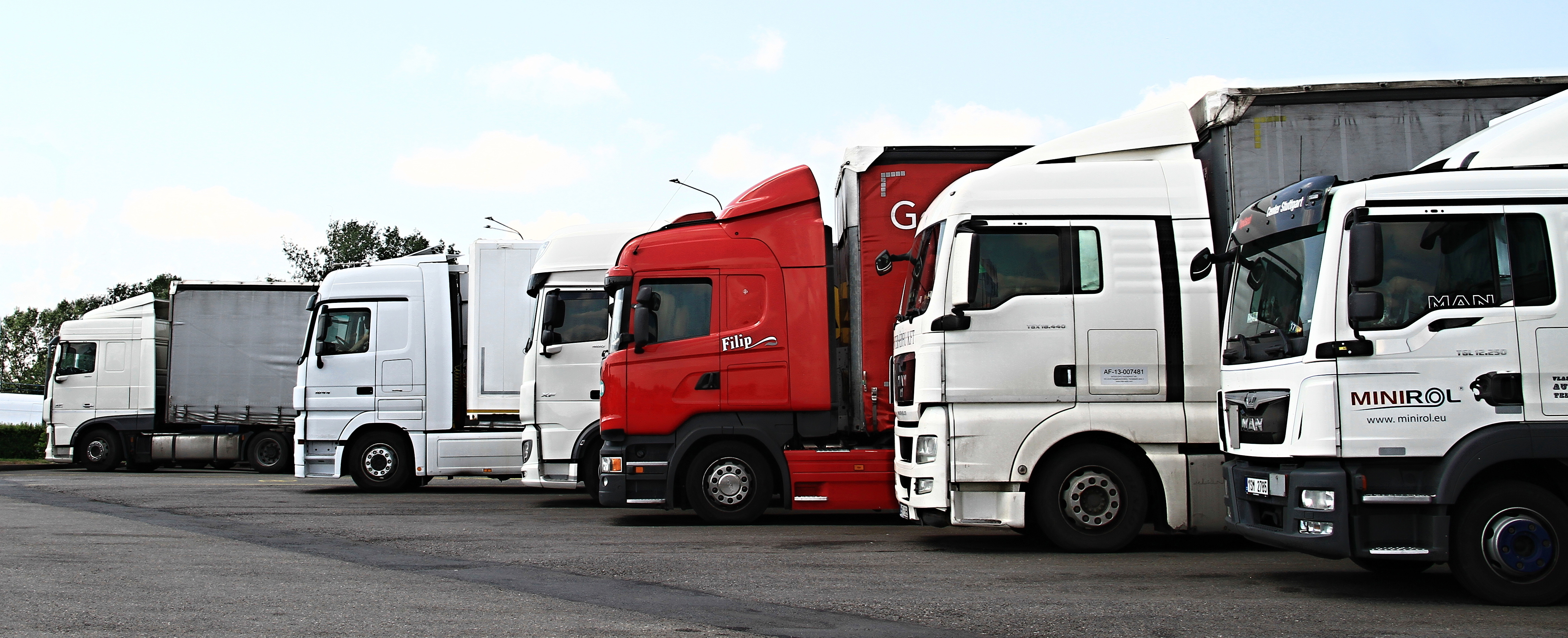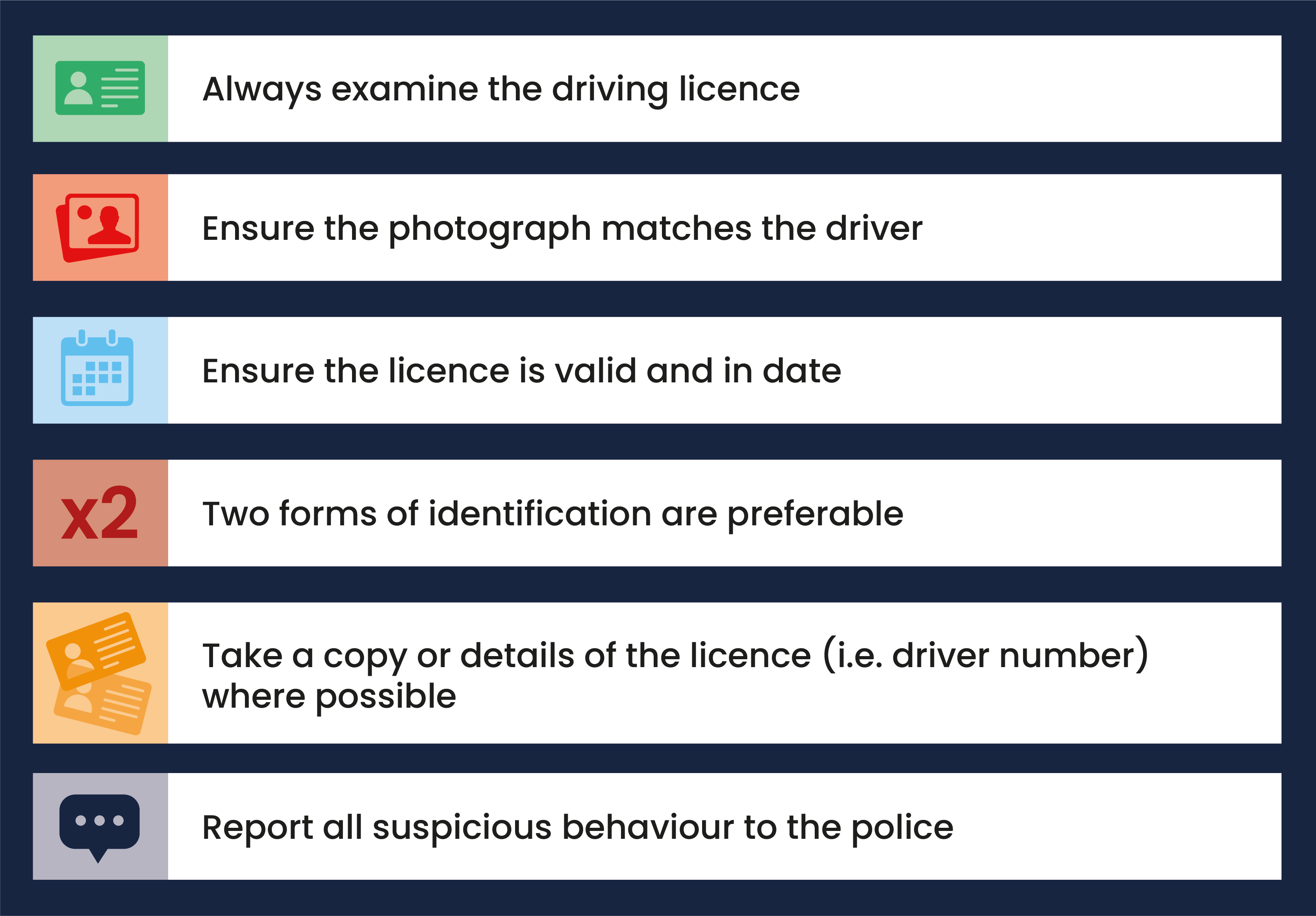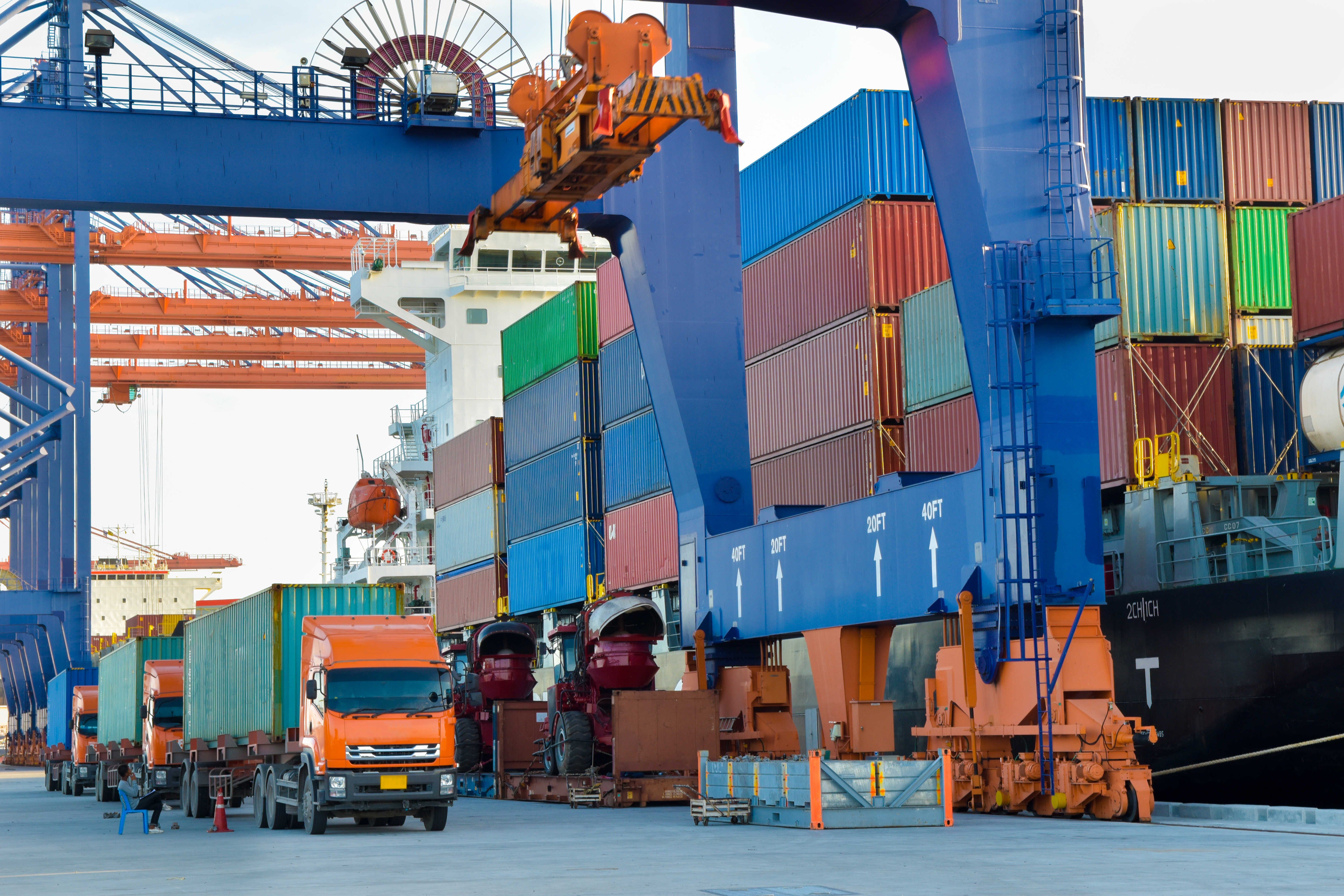1. Introduction
The following advice is recommended to help detect, deter or deny those considering using a vehicle for criminal or terrorist purposes.
Significant numbers of public service vehicles (PSV) and heavy goods vehicles (HGV) and/or their loads are stolen every year. A third are stolen for their loads and a third are stolen from the owner’s premises. The primary reason is crime, however, there is a crossover with terrorism where vehicles can be used as a weapon, or funds from criminal activity can be used to finance terrorism. Most instances of crime are opportunist. However, even simple precautions can make a difference.

Companies hiring vehicles must also be responsible for making sure they maintain the highest standards for verifying the identities of any business or drivers using their vehicles.

2. Assess your risk
It is important that you, your colleagues and your employees understand the threat and recognise situations where you are vulnerable in both the UK and travelling abroad. Drivers are potentially vulnerable when parked off the road. There are many creative ways and means to target drivers and their vehicles. The objective may be to steal the vehicle or its load; cause specific loss to a business or its reputation; or to use the vehicle as a weapon.
3. Recruitment
When employing staff, the following checks should be carried out:
-
Always check a driver’s references and previous five-to-ten-year employment history
-
Always speak to previous employers (do not rely on phone numbers given by the driver)
-
Inform applicants that false details on application forms may lead to dismissal
-
Check driving licenses are valid and look for endorsements before you employ someone, and then at six-monthly intervals afterwards. Drivers should tell you of any changes to their license
-
Check if the applicant has any prosecutions pending or is waiting for sentencing by a court
-
For agency drivers, make sure that the agency has carried out all of these checks including criminal records checks
-
Use only reputable agencies that are affiliated with a recognised UK trade organisation
Read more about document awareness to learn about verifying documents and how to spot a forgery.

4. Company policy and procedures
Build security duties and responsibilities into your company’s contract of employment. Contracts should make clear that drivers will face disciplinary proceedings if they fail to carry out these duties.
Your company should:
-
Include your company’s security instructions in the driver’s induction and driver’s handbook
-
Use photo identification cards for your company’s drivers
-
Keep copies of all driver documents within their HR record
-
Conduct due diligence checks on the identity of anyone hiring a vehicle. For HGVs and PSVs, always insist on an operator’s license where appropriate
-
Adopt a low tolerance approach to overdue rentals and hiring. Report these to police at the earliest opportunity
-
Make sure drivers communicate delays to their destination arrival times within agreed timeframes
-
Make sure staff leaving your employment no longer have access to IT, keys, and information. Change pin numbers, passwords or passcodes at regular intervals
-
Have a social media policy that outlines what staff, drivers and passengers can and cannot put on social media platforms
-
Consider using the Road Haulage Association’s Security Audit Service
4.1 Social media
Posting information may put your personal safety at risk. If you provide too much information and do not have the appropriate privacy settings applied, your business or social network accounts could be exploited for those intent on building up a picture of your travel plans, business, loads and other details that they may seek to exploit in the future.
Social networking sites such as Facebook, Twitter, LinkedIn and Instagram are popular applications, allowing people to create a profile containing personal information and interact with other users. Review your privacy settings to prevent your online social media profiles being visible to a large, unrestricted audience.
Drivers and passengers should consider if it is appropriate to provide ‘live time’ information about their activity that would allow them to be targeted. If required, it is always better to post information after the activity has taken place.
Location-based information can be posted on social networks, especially from GPS-enabled mobile devices, which tells others exactly where you are or have been. This information is not secure and could be viewed by anyone. The responsibility rests with you to make sure that no-one is put at risk due to what is disclosed.
Go to the Get Safe Online website to learn about keeping safe while online.
4.2 Key considerations
Drivers should always:
-
Lock and secure their vehicle whenever they leave the cab and keep the keys with them (including when unloading and loading)
-
If possible, always refuel on site before beginning a journey
-
Plan routes before beginning a journey
-
Avoid taking the same routes or stops for breaks. These routines make vehicles an easier target for those with criminal intent or conducting hostile reconnaissance
-
Comply with procedures to authorise changes to a delivery destination
-
Never pick up unauthorised passengers/hitch hikers
-
Report any irregularity in loading, locking, sealing or documentation
-
Check the vehicle is correctly loaded
-
Protect documents such as shipping orders and consignment notes; these help criminals to steal valuable loads
-
Avoid talking about loads or routes with other drivers or customers (including over radios and telephones)
-
Report suspicious behaviour
In an emergency, call 999
For a non-emergency, call 101
If you suspect it, report it to the Anti-Terrorist Hotline on 0800 789 321
5. Secure working practices
A healthy security culture should be part of everyone’s daily working practice. Businesses should restrict knowledge of loads and routes to those who need to know. The pre-loading of vehicles should be kept to a minimum. Avoid loading on a Friday afternoon for a Monday morning departure. When pre-loading is necessary, always keep the vehicle on secure premises.
If the driver keeps the keys to their vehicle when they are not at work, advise them to:
-
Keep them secure at all times
-
ever leave them where they can be copied
-
Make sure that the keys do not obviously identify the vehicle
If vehicle keys are kept at the operating centre:
-
Identify appropriate key control and security measures for both the vehicles and premises
-
Keep them in a secure and locked location, out of sight and reach of strangers
-
Never use a hiding place such as a wheel arch or a peg system that identifies the vehicle
Be alert to any visual changes to your vehicle. If you notice a suspicious object on or near the vehicle, do not approach or enter the vehicle. Contact the police and give them the location and registration number of your vehicle.
6. Overnight parking
Make sure you know where your drivers are parking overnight. Instruct drivers to use pre-planned overnight parking facilities, particularly those that are members of the police Safer Parking Scheme.
The Highways Agency also provides a Truck Stop Guide covering England.
The following websites offer guidance on keeping drivers safe if they have to make an overnight stop:
7. Driver Contact
Keep in regular contact with drivers to identify/confirm routes, stops and estimated times of arrival. Drivers should notify employers of changes of routes, delays or unplanned stops.
8. Protest at premises or towards drivers
It is possible that a company’s business association with an organisation could lead to individuals gathering and protesting at your premises or other premises that you deliver to. Protesters may assemble close to the boundary of the work place or target staff and vehicles.
If this happens:
-
Inform the police immediately by calling 999 and await their arrival
-
Stay calm. Individuals may try to intimidate you, but this will not necessarily lead to a physical threat
-
Remain in your vehicle or on the property. Close and lock doors and windows and draw the curtains/blinds to your premises and vehicles as appropriate
-
Inform your workplace and colleagues
-
Do not, in any way, respond to, or antagonise those protesting. Avoid confrontation
-
If someone attempts to confront you, stay in your vehicle. Keep the engine running and if you need to (and it is safe to do so), reverse to get away
-
If possible, note descriptions of individuals and vehicles present
-
If you have a CCTV system fitted that has recorded images, you should hand footage over to the police; it may assist with identification or evidence, where offences may have been committed
-
Postpone any expected visitors to your site
-
Know exactly where the perimeter of your site is should there be a demonstration
8.1 If you think you are being followed in your vehicle:
-
Try to stay calm
-
Keep the vehicle moving, even if only slowly
-
Close all windows and ensure the cab is secure
-
Contact the police immediately calling 999
-
If you can, make your way towards the nearest open police station
-
Record the registration number of any suspicious vehicle
9. Vulnerable/dangerous loads
Operators should alert drivers to vulnerable loads or high-consequence dangerous goods and issue them with a vulnerable load/high-consequence dangerous goods card for these loads.
If a vehicle is stopped either by uniformed officers in a marked police vehicle, or by Driver and Vehicle Standards Agency (DVSA) officers, drivers should display the card and follow the instructions on the reverse of the card to verify the identity of officers from the police and DVSA.
During security alerts, operators and drivers should follow the advice given to them by their local police force. (Keep up-to-date using news media, the MI5 website and relevant associations).
10. Secure Vehicles
Remember vehicles can be stolen, whatever their load might be, to be used for criminal purposes, including terrorism.
Use and maintain security equipment as it will make your vehicles less attractive to thieves. Discuss options with your insurers, including goods in transit insurers, vehicle dealers and security equipment manufacturers.
-
Each vehicle will need different levels and types of security equipment, depending on its use
-
Install vehicle immobilisation equipment, if not already fitted by the manufacturer
-
Consider the use of telematics equipment which can remotely trigger an alert if a vehicle deviates from its intended route
Contact your local police crime prevention officer and insurer for specific security advice.
Go to the Sold Secure website to learn about enhancing vehicle security.
11. Premises security
A third of stolen trucks are taken from the owners’ premises, which is why the physical security of premises is vital.
Physical security measures that should be taken into account include:
-
Perimeter protection (fences)
-
Site access and its control (gates)
-
Surveillance (lighting and effective CCTV)
-
Security guards
-
Intruder detection
-
Visitor controls
-
Limiting the number of key holders
-
Vehicle key storage
-
Regular changing of passcodes
-
Controlled access to loading bays and control systems
-
Personnel and vehicle search procedures
Always make sure that any tools or equipment that may help criminals to steal trucks or loads are securely locked away when not in use.
12. Roof markings
The National Police Chief Council (NPCC) has approved the wider use of roof markings on HGVs. This would help police air support units to identify vehicles should they be stolen. HGVs, particularly those which regularly carry vulnerable or dangerous loads, should use roof markings.
13. International hauliers
When travelling abroad, all hauliers, drivers and operators should have effective systems to help protect their vehicles. Following a simple vehicle security checklist and securing your vehicle reduces delays and possible penalties. Simple steps can make a difference.
You should always:
-
Obtain a checklist and vehicle security instructions from your employer
-
If possible, watch the vehicle being loaded to ensure no one enters it who shouldn’t
-
Secure your load with a tilt cord and use strong padlocks or seals for load doors and panniers. (they can be glued or pinned together to show they have not been tampered with)
-
Check the wind deflector and axles
-
Check the seals, fabric, roof and security devices of the vehicle for damage. If there is evidence of damage or tampering, check the load and load space and re-apply security devices. Record the checks made on the checklist at loading, after every stop and before arriving at the border
Be vigilant and speak to a UK Border Agency officer or the police if you suspect that someone has entered or tampered with your vehicle.
Go to the Government Vehicle Security Checklist to make sure you are carrying out the correct checks on your goods and vehicles.
14. Prevention of illegal immigration
People attempting to gain illegal entry to the UK will look for vulnerable vehicles, such as HGVs, which they believe are heading for the UK. An effective way to deter people is to park facing away from the port. This gives the impression the vehicle is travelling away from the UK and will therefore be less appealing.

To reduce the risk of delay and a possible penalty from UK Visas and Immigration, make sure that you read and follow the guidance contained in these documents:
15. Rental Vehicles
The Department for Transport along with the police and other industry stakeholders have developed guidance for the rental vehicle industry. This guidance supports the Code of Practice (CoP) which sets out the Department for Transport’s requirements of those wishing to join the approved Rental Vehicle Security Scheme (RVSS).
Registration is conditional upon the completion and submission of the online application form and an electronically signed security declaration.
The Department for Transport’s RVSS scheme is only applicable to those vehicle rental companies which engage in short-term vehicle rental transactions to consumers. Typically, the period of rental or hire will be calibrated on an hourly, daily or weekly basis.
16. Countering vehicle as a weapon guidance
The Countering Vehicle as a Weapon Guidance sets out straightforward steps which can help mitigate the threat of vehicles being used in ‘vehicle as a weapon’ attacks.
As well as helping to keep the public safe by deterring would be attackers from using your fleet, following this advice will:
-
Help prevent acts of terrorism
-
Help protect your organisation’s reputation
-
Demonstrate your commitment to Corporate Social Responsibility
-
Help to improve security culture within your business
-
Help reduce crime
The guidance covers security measures for:
-
Building and embedding a positive security culture and behaviours
-
Personnel security
-
Operating centres and maintenance facilities
-
Transport managers and drivers
-
Vehicles
-
General security issues
